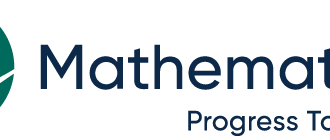Category: Uncategorized
-
Leveraging Community Based Organizations
Community-based organizations (CBOs), with their credibility and established relationships, can effectively serve as tutoring partners in their communities. In the 2023-24 Call to Effective Action (CEA), Accelerate awarded funds to seven CBOs committed to implementing, testing, and scaling a school day tutoring model, granting up to $150K to models with a strong theory of action and some evidence of structures and resources for success.
-
The Tutoring Revolution
More families are seeking one-on-one help for their kids. What does that tell us about 21st-century education?
-
What Schools Can Do to Help Immigrant Students Succeed
Approximately 1 million students in the United States are immigrants who have attended schools in the country for less than three years. Close to 700,000 students are undocumented, and about 7 percent of all students in U.S. public schools live with at least one undocumented parent, according to researchers.
-
FACT SHEET: Biden-Harris Administration Announces New Actions and Resources for Increasing Student Attendance and Engagement as Part of the White House Every Day Counts Summit
The Biden-Harris Administration has made historic investments to help ensure that all children can thrive in the 21st century – and that begins with students being in school every day. Chronic absenteeism – students missing 10% or more of school – emerged as a serious challenge during the COVID-19 pandemic due to school closures, which began during the previous Administration. The U.S. rate of chronic absenteeism reached about 31% in the 2021-2022 school year. There have been improvements in the 2022-2023 school year, with some American schools and school systems demonstrating significant progress based on proven strategies.
-
3 academic interventions policymakers can support to help get students back on track
Recent research out of NWEA explores what teachers can do to support students. Our collaboration with researchers outside of our organization has also helped us develop recommendations for policymakers. They are presented in our new brief with EdResearch for Action, a project of the Annenberg Institute at Brown University and Results for America. The brief highlights research-based academic interventions and digs into research to highlight the most promising interventions policymakers can support for accelerating student learning in math and reading. We focus on three interventions with the strongest research base—tutoring, summer school, and double-doses of math instruction—before discussing ways schools can create the conditions for academic acceleration practices to succeed.
-
Chronic absenteeism is making academic recovery harder in Ohio
Accelerating student learning remains a moral imperative, and a continuing challenge for Ohio’s policymakers and educational leaders. There has been much discussion about how to boost achievement, but one of the most basic ways to move the needle might be hiding in plain sight: simply making sure that students attend school. Unfortunately, absenteeism soared during the pandemic and remains at alarmingly high levels. Statewide, chronic absenteeism rates increased from 17 to 27 percent between 2018–19 and 2022–23. That translates to 418,382 students who were chronically absent last year. Such students miss more than 10 percent of the school year for any reason, whether excused or unexcused. Based on a 180-day year, that is equivalent to eighteen or more days of school—nearly a month worth of learning. That’s a lot of valuable instructional time lost.
-
Advancing Equitable Outcomes from Pre-K through the Workforce by Aligning State & Local Data Systems
The COVID-19 pandemic exacerbated pre-existing inequities that changed how individuals engage with pre-K programs, schools, colleges, employers, and the world at large. Early evidence suggests the pandemic took a toll on student learning, educational attainment, employment, and physical and mental well-being, especially in communities of color and communities experiencing poverty. In recognition of the fact that better data infrastructure will be needed to shift the systems that currently produce inequitable outcomes, a growing number of states are working to modernize statewide longitudinal data systems to understand the experiences and outcomes of individuals seamlessly across pre-K, K–12, postsecondary, and workforce systems.
-
So What Is High-Dosage Tutoring Anyway?
In “Straight Talk with Rick and Jal,” Harvard University’s Jal Mehta and I examine some of the reforms and enthusiasms that permeate education. In a field full of buzzwords and jargon, our goal is simple: Tell the truth, in plain English, about what’s being proposed and what it might mean for students, teachers, and parents. We may be wrong and will frequently disagree, but we’ll try to be candid and ensure that you don’t need a Ph.D. in eduspeak to understand us.
-
Schools Must Know If Their Learning-Loss Programs Work — Before ESSER Funds End
Since the pandemic began in March 2020, the federal government has provided nearly $190 billion in education funding to states and districts. The three rounds of Elementary and Secondary School Emergency Relief funding represent the largest infusion of federal funds in history for reopening schools, updating buildings and supporting learning recovery. Now, over three years later, is the time to assess whether the dollars have made a difference, and what they should be spent on going forward.
-
A Data-Driven Approach to Enhancing Summer Programs
A new report identifies four areas to focus on to measure and improve summer learning programs, key questions to answer as you seek out data, and research-based recommendations for each area of data collection.






